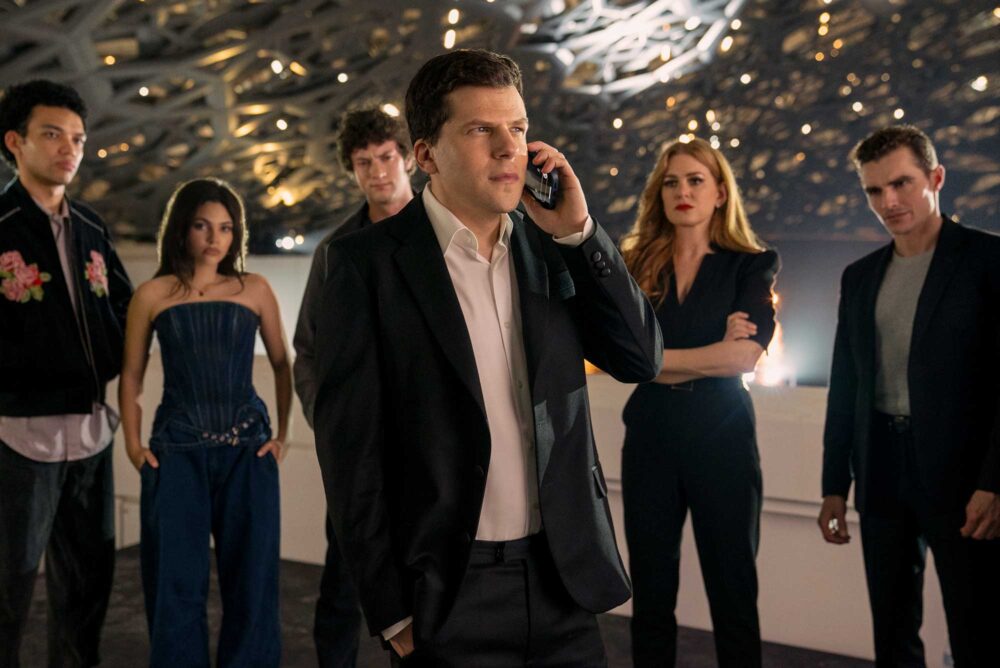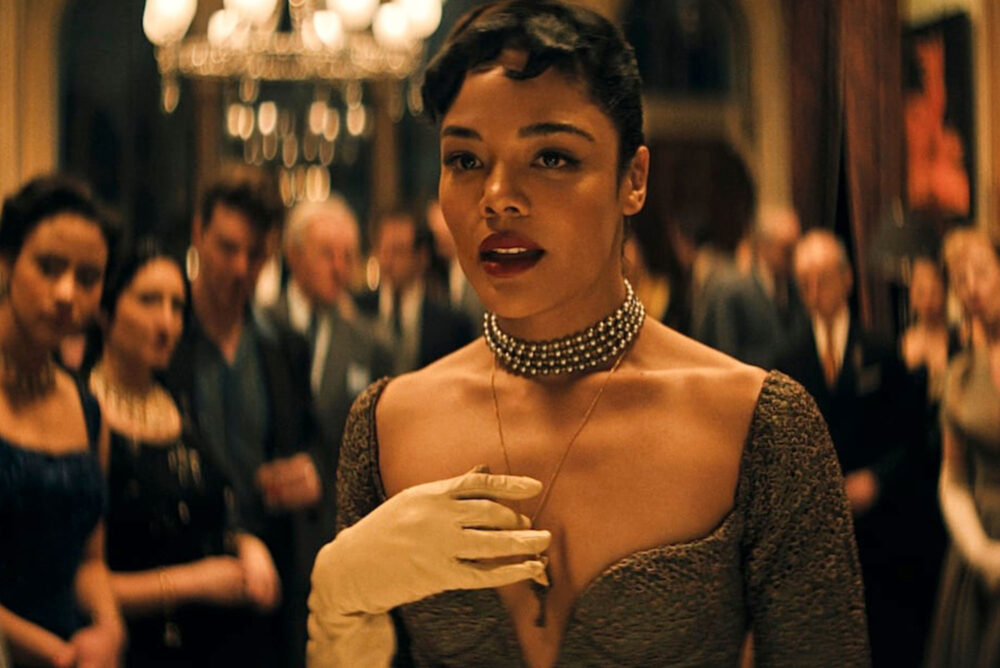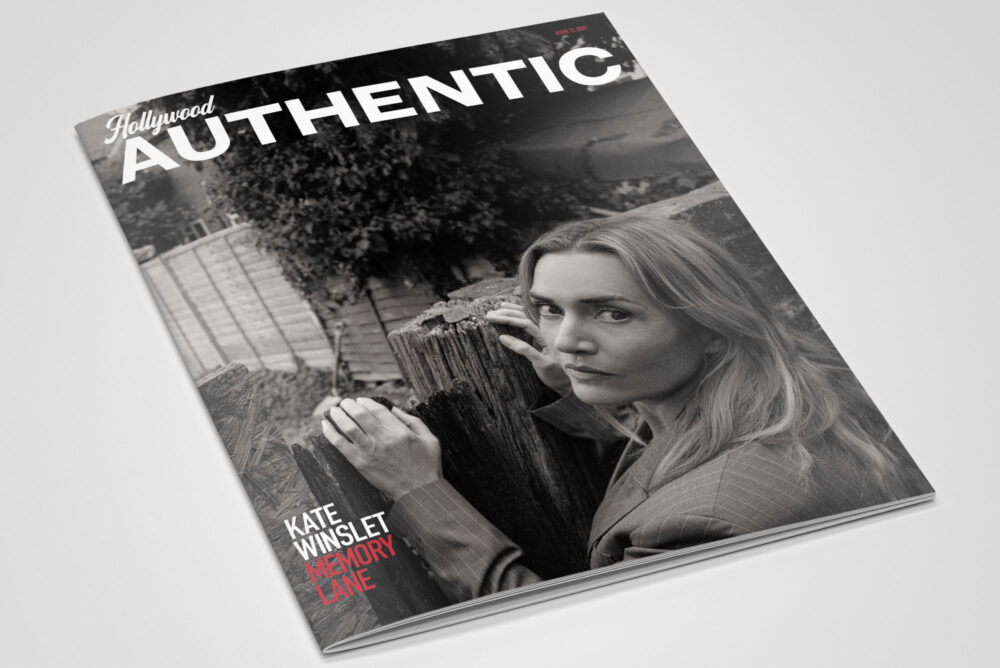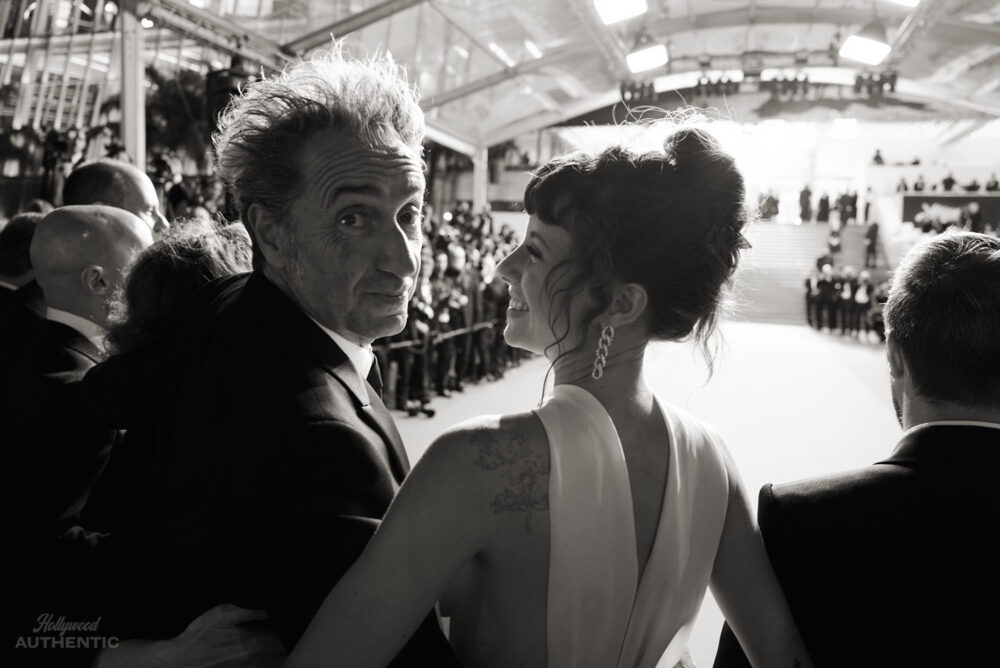Photographs by MARK READ
Words by JANE CROWTHER
Standing on Broadway, between W Olympic and W 9th, the rosy-hued United Theater soars 13 floors over the historic Broadway Theater District of Downtown LA, a physical manifestation of the dream of independence by Hollywood artists. As dusk falls and the grand dame’s neon flickers on, the building seems like a time capsule – an opulent cathedral to movies from a bygone age and now one of the last remaining atmospheric auditoriums from an era pioneering the so-called ‘seventh art’. Though it was not the first picturehouse to stand in this neighbourhood, the United was a trailblazer in representing a new wave of indie movie stars in Chaplin and his fellow renegades – artists who wanted out of the studio system in order to control their own creative output. In 1919, the group broke away from the studios and formed United Artists, giving themselves agency over the creation, production and distribution of their work – a standard ambition for any actor working in Hollywood today, but an entirely maverick concept then. Eight years later, they formed the United Artists Theatre Circuit to showcase UA productions, and the United Artists Theatre was conceived as the flagship. Downtown LA was the growing hub for movie life, a mecca for film fans that evolved to become the world’s largest concentrated area of movie houses by 1931.
At the height of movie mania, Downtown could seat a staggering 15,000 audience members over 12 cinemas. Entertainment began in the district in 1870 when William Abbot started the first permanent theatre in the spot that is now El Pueblo de Los Angeles historic park, welcoming a merry-go-round of theatrical troupes as they travelled the show circuit through then-fledging towns. By the turn of the century Abbot’s business was joined by nickelodeons and vaudeville venues, with promoter Sid Grauman opening a theatre where the Million Dollar now sits on Broadway in 1918.


On opening night, 100,000 fans crowded the streets to listen to the event via loudspeakers, the national guard called in to keep order
By 1922, Grauman had opened the ‘atmospheric’ Egyptian theatre on Hollywood Boulevard, following it in 1927 with the Chinese down the road. The United began construction in the same year, with crowds in their thousands jostling to see Mary Pickford break ground perched in a steam-driven shovel. Designed by architect C Howard Crane in a gothic design that was a departure from the in-vogue classic revival architecture of the day, the vibe of the venue was thought to have been inspired by Pickford and Fairbanks’ honeymoon to Spain, the soaring vaulted ceilings and intricate plasterwork recalling the lines of the cathedral in Segovia.

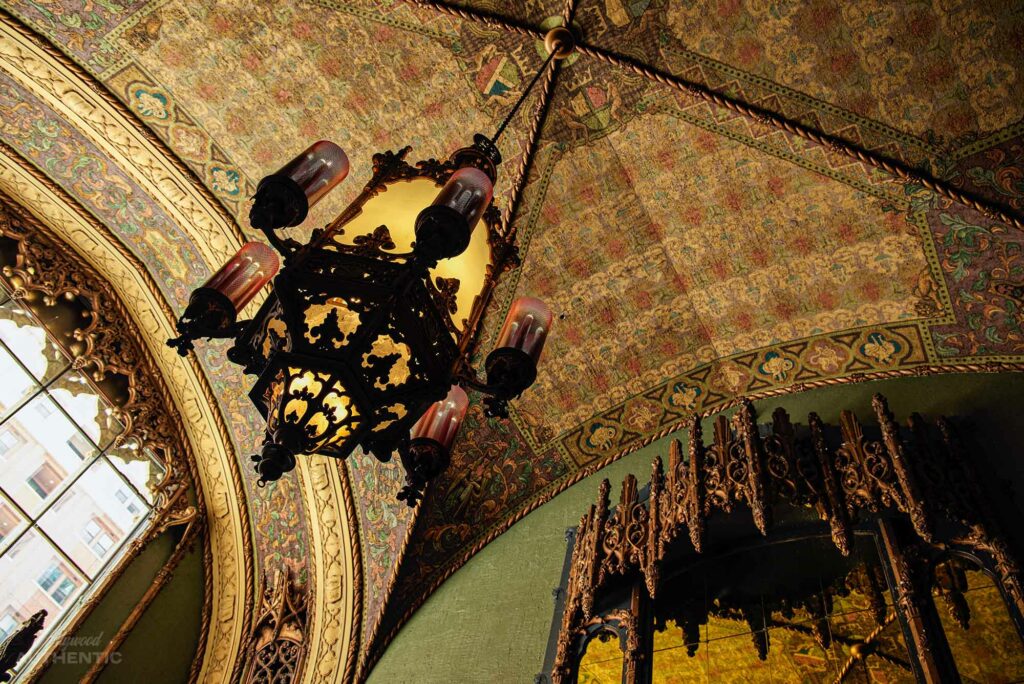
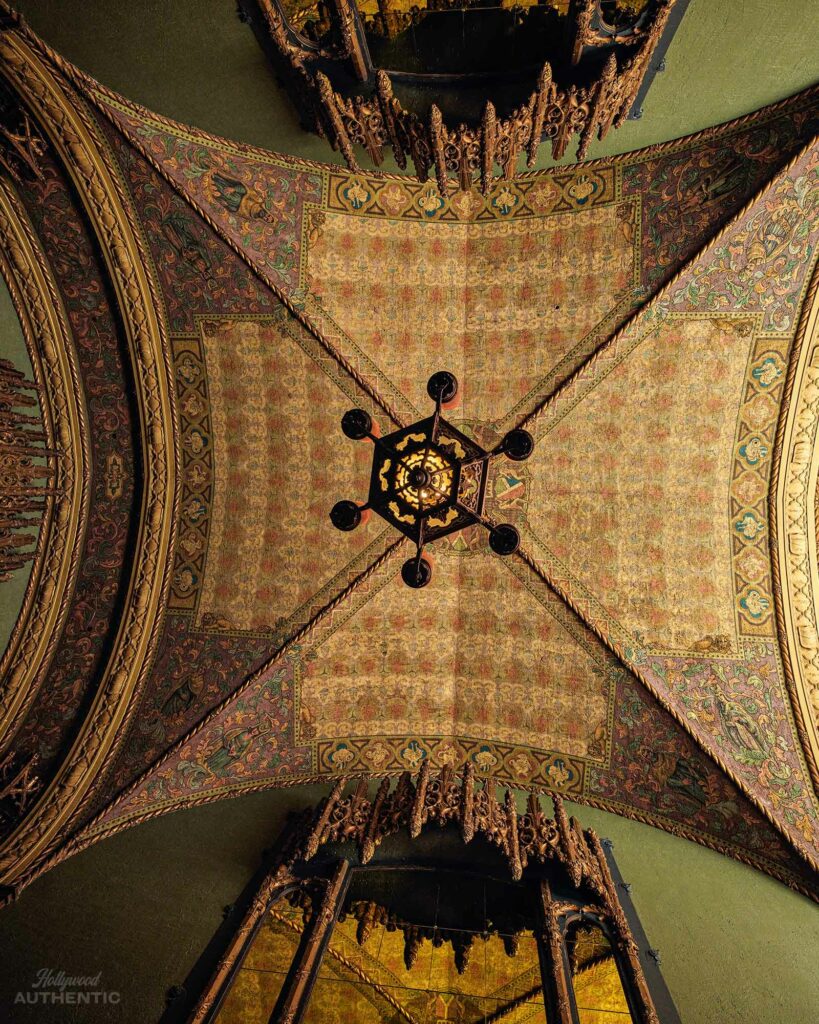
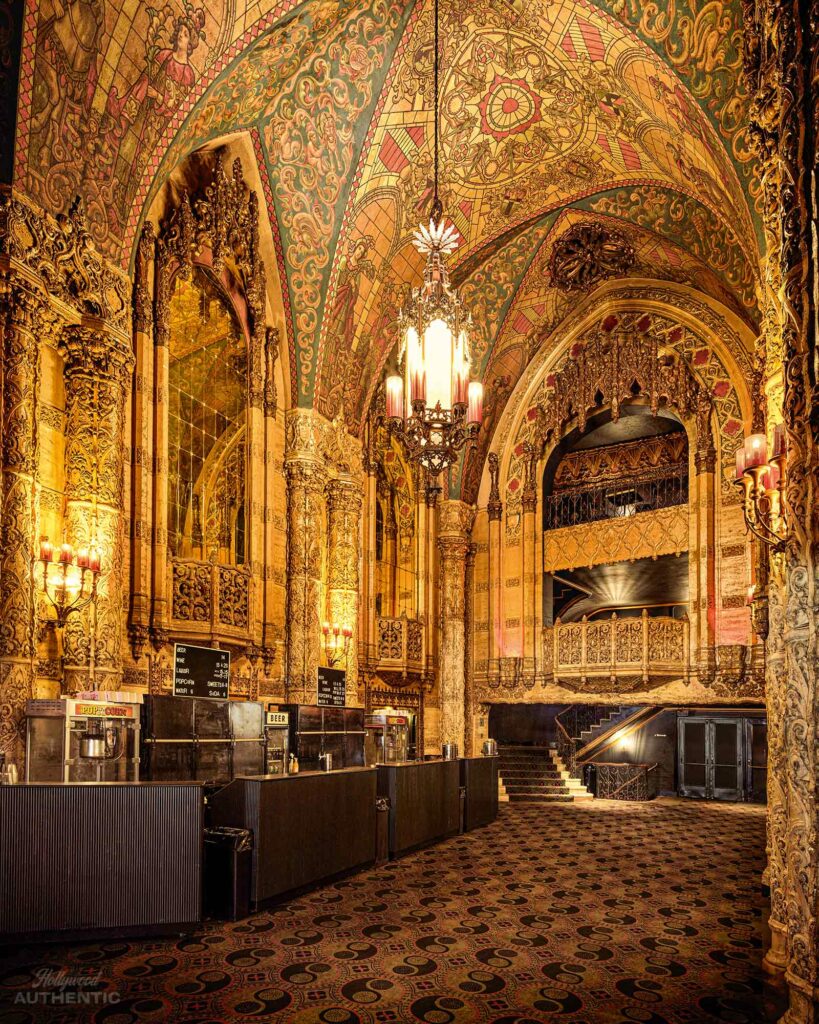

The interiors were decorated with cheeky Anthony Heinsbergen-created murals that showed Chaplin and gang as heroic deities fighting demonic oppressors painted to resemble their former bosses, the controlling studio heads
The bankrolling film stars built the place with wonder in mind – their aim being to transport 2,214 punters to another world the minute they stepped through the door. So the height of the building transcended the highest in the city at the time at 13 storeys (the tallest in LA until the 1950s) and the interiors were decorated with cheeky Anthony Heinsbergen-created murals that showed Chaplin and gang as heroic deities fighting demonic oppressors painted to resemble their former bosses, the controlling studio heads.
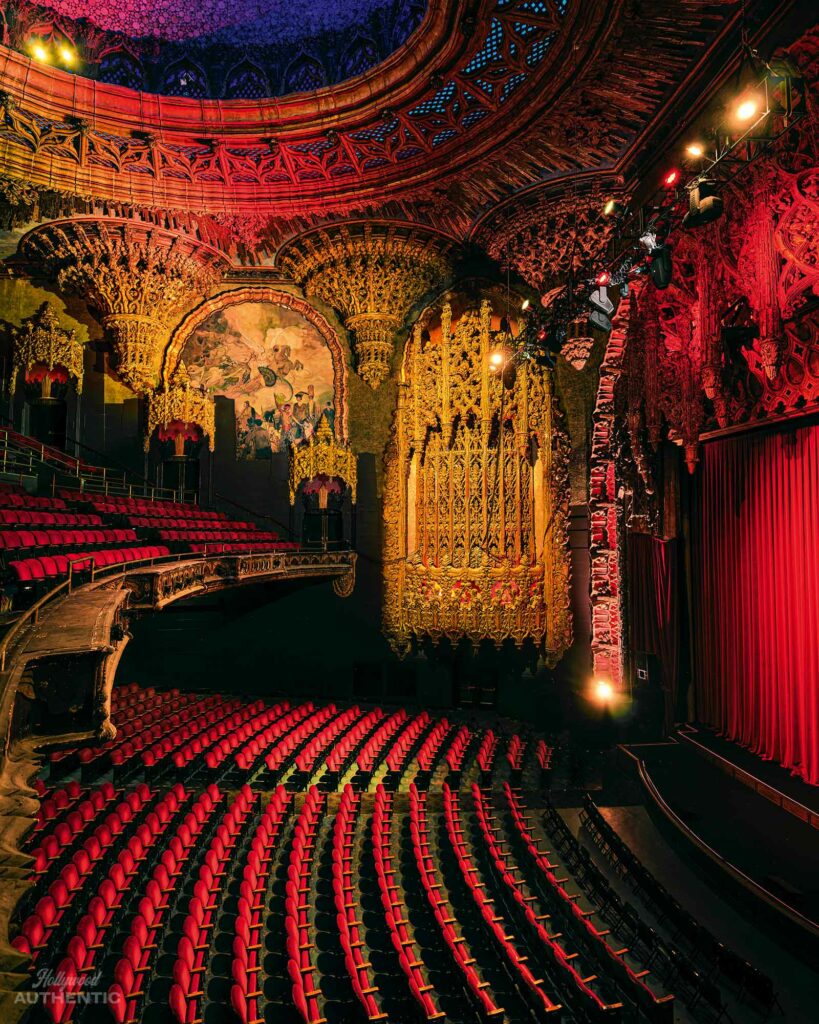
On the building’s exterior, the carved grotesques crouching at the top of terracotta columns and in window arches were cameramen and jazz musicians instead of gargoyles. And the proscenium around the silver screen was a riot of red filigree to match the extravagant ceilings gold painted to look like tapestries and the exotic Byzantine lanterns. The auditorium ceiling featured an oval dome tiled with dazzling mirrors and thousands of crystal drops that shimmered in a draught. Pickford had her own private screening room installed – only accessible via the gentlemen’s restrooms – and continuously running water fountains dotted the lobbies.
Throughout 1927, crews worked around the clock to get the building ready for the January 1928 premiere of Pickford’s My Best Girl. On opening night, 100,000 fans crowded the streets to listen to the event via loudspeakers, the national guard called in to keep order. The movie-star owners regularly appeared at the venue until the Depression forced a temporary closure. When it reopened, the United moved with the demands of the times, installing Todd-AO 70mm widescreen-format projectors, but its single-screen majesty fell out of favour in the 80s when crowds flocked to modern multiplexes.
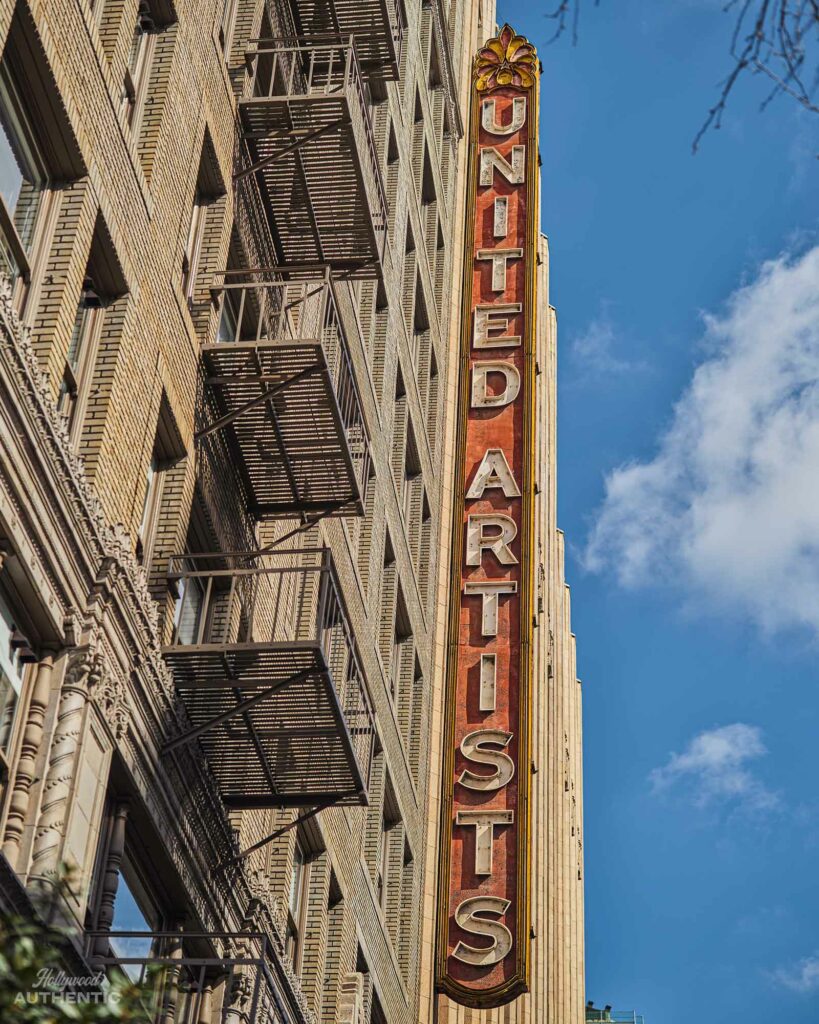
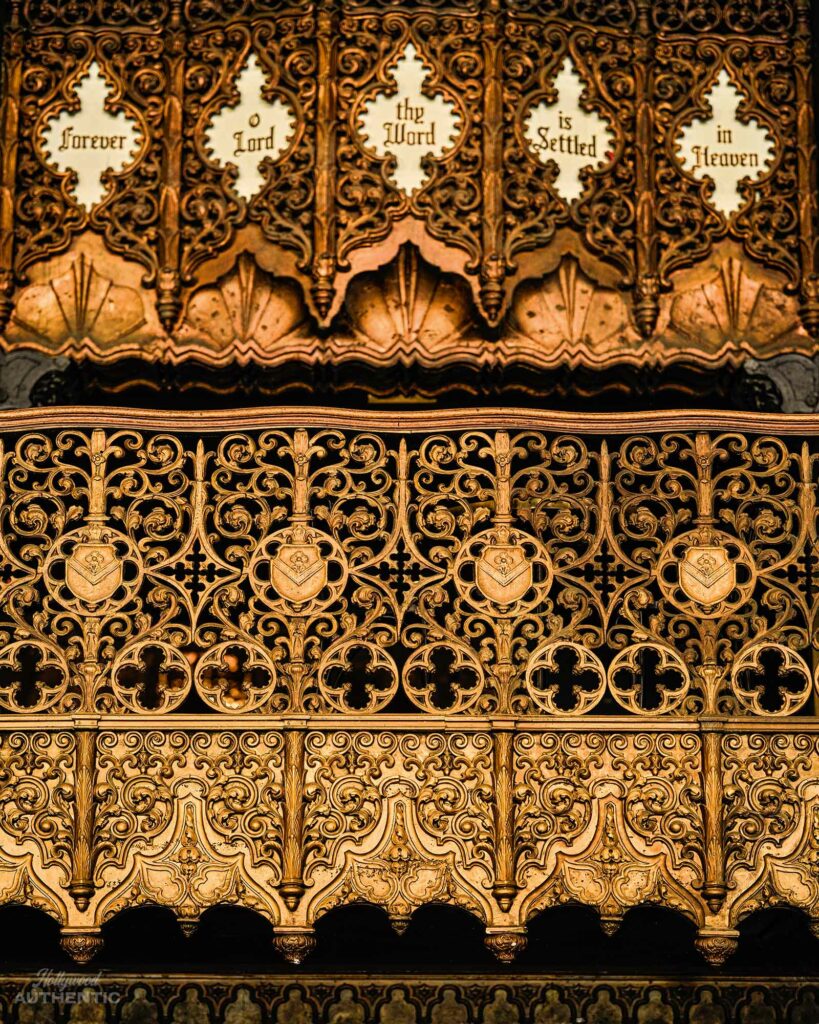
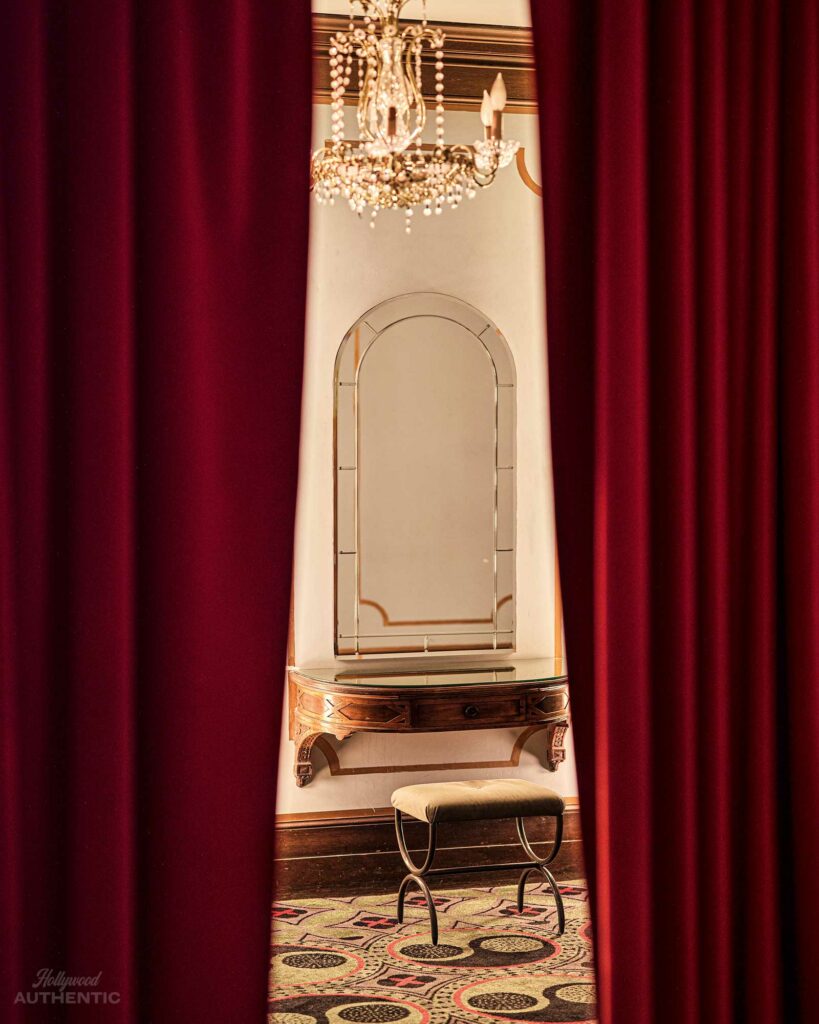
On opening night, 100,000 fans crowded the streets to listen to the event via loudspeakers, the national guard called in to keep order
While many solo-screen cinemas were carved up for multi-screen use or razed entirely, the United survived thanks to a period during Downtown’s down-turn when it became a Spanish-language movie theatre and then a ministry for TV evangelist Gene Scott. The flamboyant Scott, who often wore two pairs of glasses and claimed to hang a Rembrandt in the lobby, bought the building in 1986, installing a neon ‘Jesus Saves’ sign on the roof and preaching to his congregation in the seats and via TV. His occupation helped the palace remain beautiful, his restoration works ensuring its longevity for future generations of wide-eyed audiences and, in 2013, hotel guests when The Ace Hotel took over. The theatre has gone full circle in its identity this year; having been called numerous names over the decades, it has now returned to The United Theater On Broadway after The Ace moved out in January.
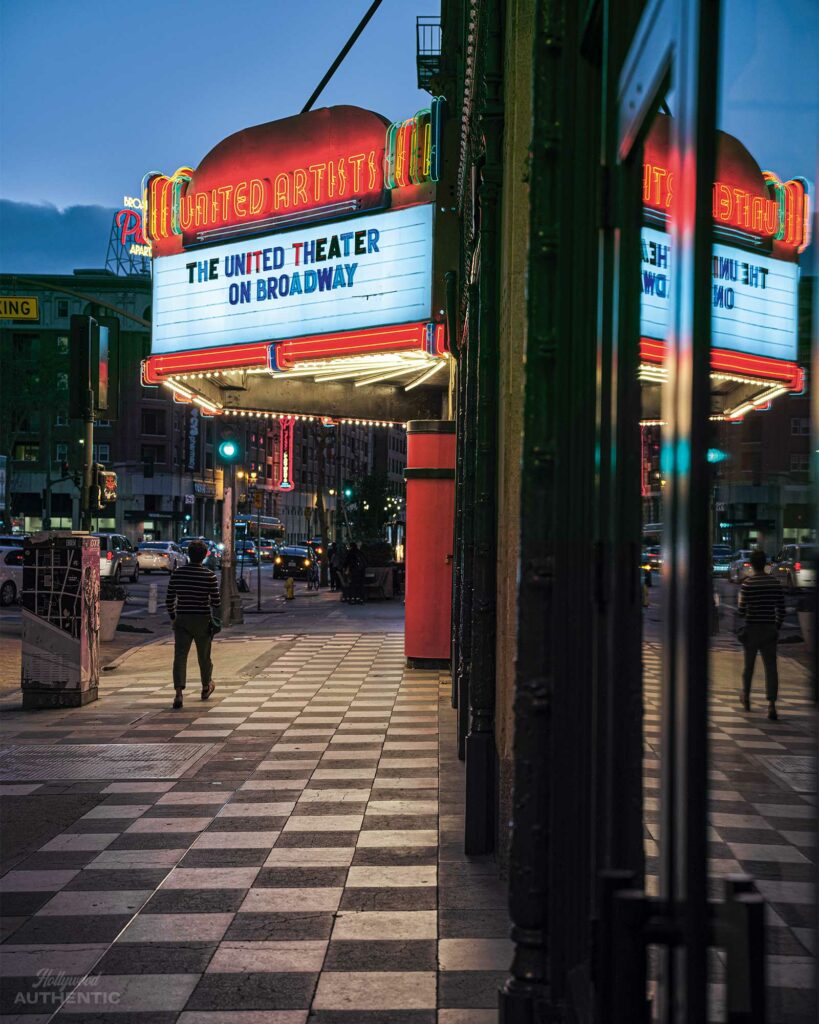
Today, the 1,600-seat venue still retains its original features and such an aura of the roaring 20s that it made the perfect space to convey the hedonistic party atmosphere Damien Chazelle wanted for the opening 40 minutes of Babylon. During a two-week shoot, the The United returned to its heyday – with charlestoning revellers, rivers of fake champagne, mountains of stunt cocaine, chickens and a jazz band. Stepping through its doors now is like time travel – a picture palace stopped in its tracks, the creativity of its founders and the joy they brought audiences felt in its foundations. Perhaps that’s why the unique space still attracts singular performers such as The Red Hot Chilli Peppers, Nick Cave, Johnny Marr and Ariana Grande to its stage, and film premieres continue to roll out the red carpet. Troubadours and artists still keeping the fierce spirit of independence reverberating through its walls… Just as Charlie and Mary intended.
Photographs and video by MARK READ
The United Theater On Broadway Los Angeles, CA 90015 Los Angeles. theunitedtheater.com/@theunitedtheater


